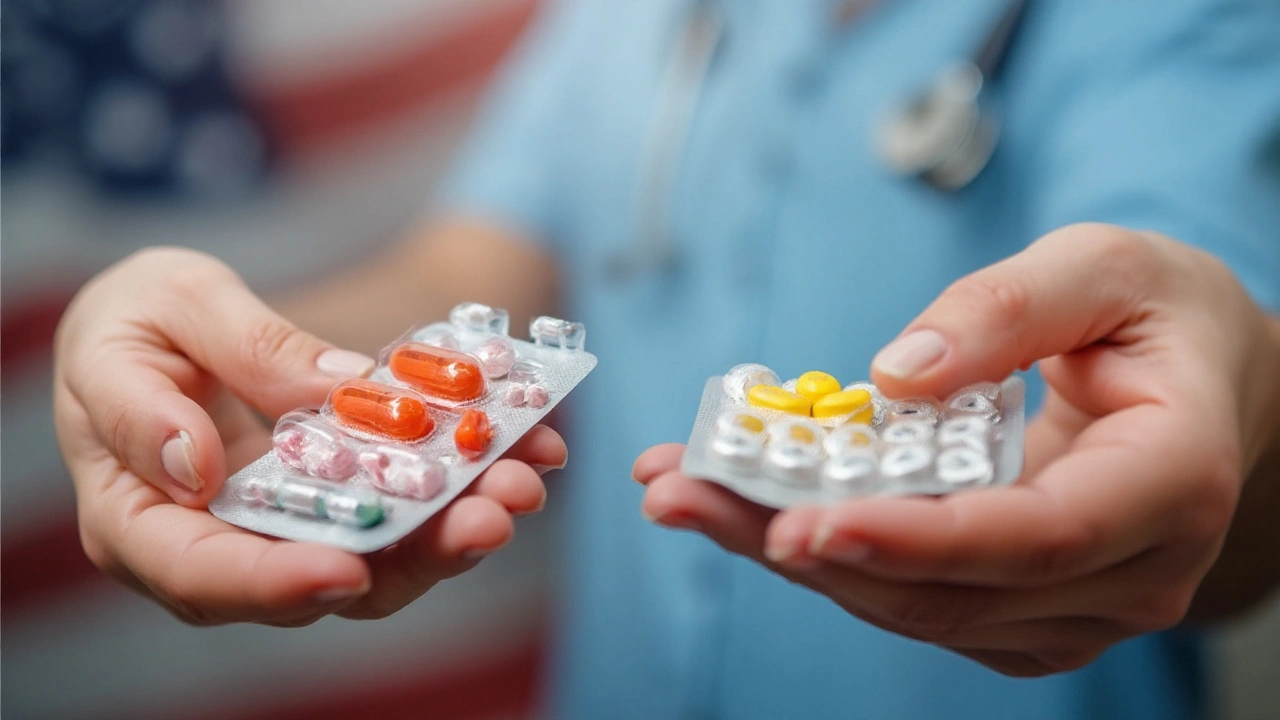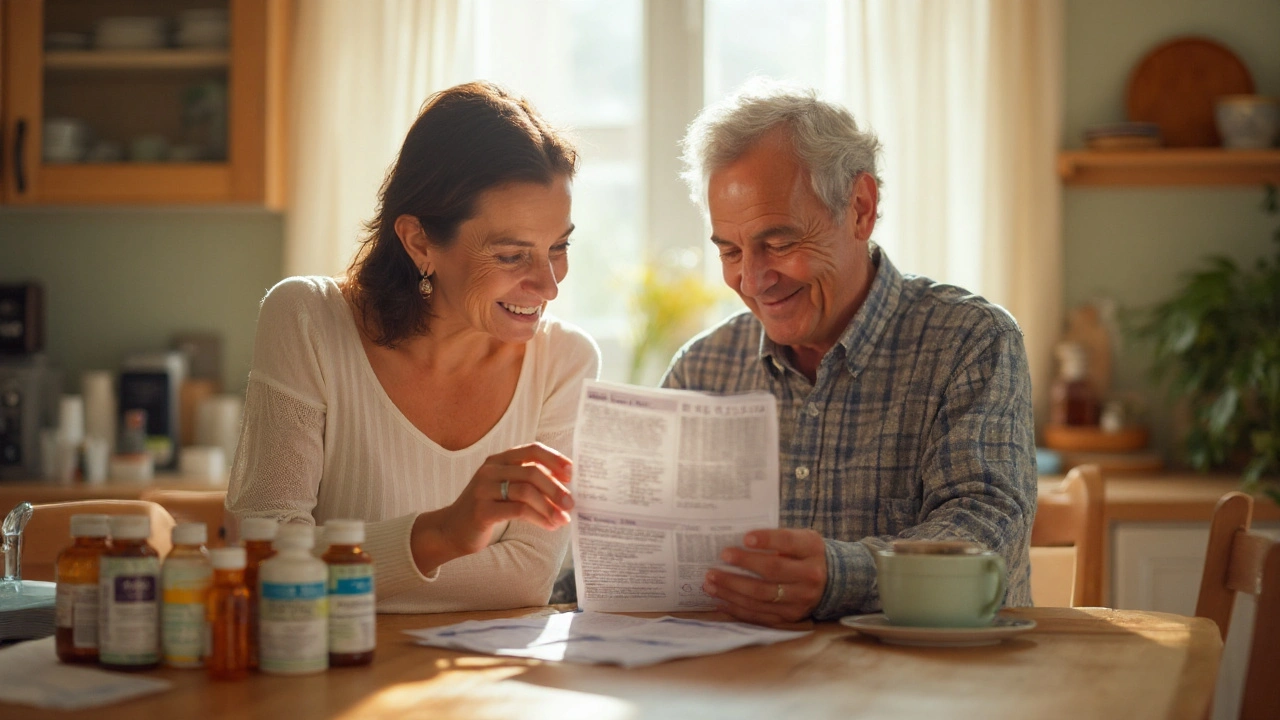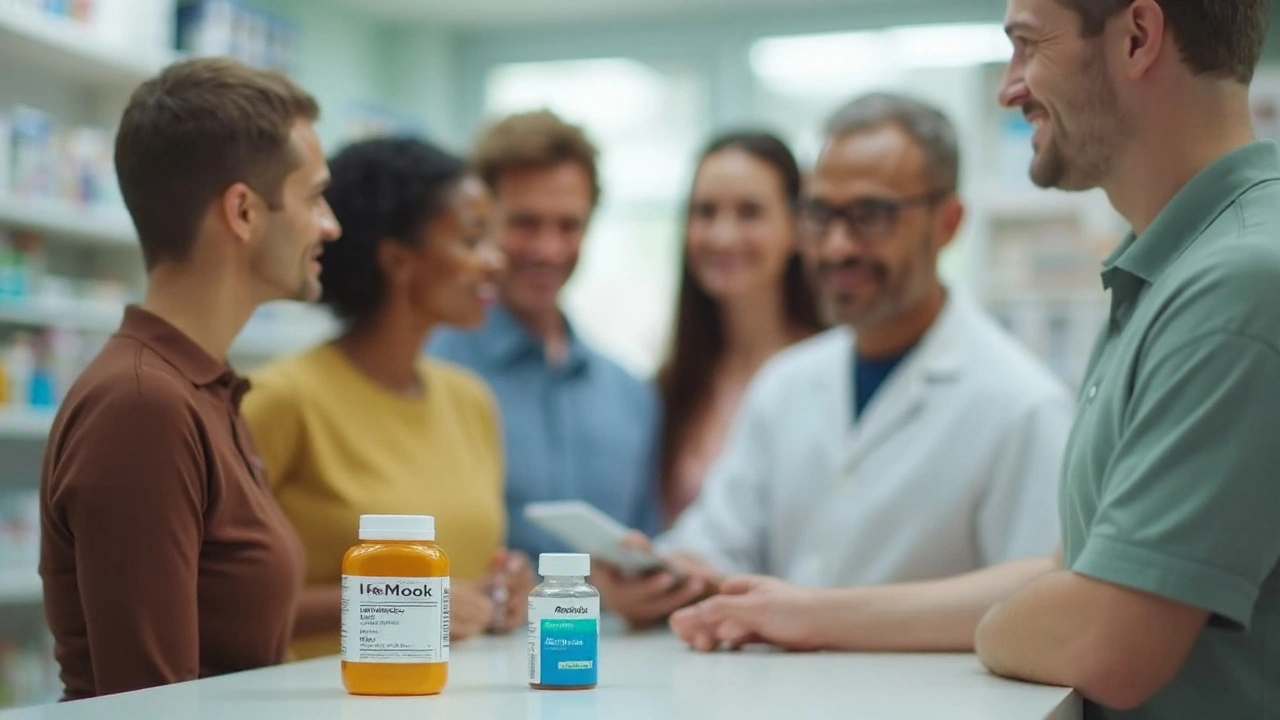Ever got a prescription, visited the pharmacy, and wondered why your pharmacist asks if you want the “generic version” of your medicine? Most of us have stared at two packages—one with a fancy brand name and price tag, one a plain box that’s way cheaper. It’s easy to suspect there must be a catch with generics, but guess what? This isn’t a trick. There’s a fascinating story behind generics— how they hit the shelves, how they differ (or not), and when picking a generic actually makes more sense for you and your family.
Generics Demystified: What Exactly Are They?
When we talk about generics, we mean medications that have the same active ingredient as a brand-name drug but get sold under their chemical name, not a snazzy brand label. So think about it like this: if brand-name drugs are like a specific, recognizable brand of cereal that everyone knows, generics are the store brand—but it’s the same basic thing in the box. The FDA (Food and Drug Administration) requires that generics work the same way in your body as the original branded one. This equivalency is called "bioequivalence." What does that mean in real life? The generic must deliver the same amount of active medicine in the same time as the original.
People often get this wrong— generics aren’t "knockoffs" or sub-par copies. The FDA holds generics to pretty tough standards. According to the FDA’s own site (you can check this for yourself), generics must match the brand in strength, dosage form, safety, quality, how you take it, and what conditions it treats. In fact, the FDA does random testing on generics to keep companies honest. The main thing that might differ? The coloring, shape, or tiny inactive ingredients that hold the pill together.
Costs are the other big difference. Because generic makers don’t pay for expensive clinical research studies (this is called the “new drug application” process), and don’t fund huge advertising campaigns, they can charge a fraction of the price. Once patent protection on a brand-name drug runs out, lots of companies can compete to make the same medicine, pushing prices down even further. A good real-world example: Lipitor was once the world’s top-selling cholesterol drug, but when its patent expired in 2011, a generic version (atorvastatin) cut the monthly price for many patients from over $100 to under $10.
One thing you might find shocking— nearly 90% of all prescriptions filled in the U.S. are for generics. And that’s not just for cough drops. Some of the most important drugs for blood pressure, diabetes, asthma, and mental health are available as generics.
Generic vs Brand-Name: Key Differences Explained
This next part trips people up: Is there ever a reason to stick with a brand, or does generic always win? Let’s break it down:
- Ingredients: Both medications have the same active ingredient. What gets your body to heal or feel better is unchanged.
- Inactive ingredients: Fillers, dyes, or binders in pills may differ. This rarely matters, but if you have allergies (like to dyes), ask your doctor or pharmacist about the generic’s “inactive ingredients list.”
- Price: Here’s where generic is almost always friendlier to your wallet. Sometimes the cost difference is massive—think $4 for a generic versus $50+ for the brand.
- Appearance: FDA rules say generics must look different; shapes or colors help avoid confusion, since patent laws often cover the look of the pill, too.
- Regulations: Both have to meet tough FDA standards, with surprise inspections and mandatory reporting for problems.
- Patents: A brand-name company is the only one to legally make and sell the drug for up to 20 years (depending on the patent). When the patent runs out, other companies can jump in and make generics.
One interesting fact: A 2017 JAMA study looked at 38 years of lawsuits around generic drugs and found only a handful where the generic’s performance really differed from the brand. Most differences turned out to be related to how the drugs were taken (with or without food, crushing a tablet, etc.), not the medicine itself.
Are there any exceptions? Yes, mostly with some medications like those for epilepsy or certain thyroid problems. For these, even tiny differences can matter for some people. If you or a loved one are on one of these “narrow therapeutic index” drugs, always ask your prescriber if switching between brands and generics is safe for you.

How Do Generics Get Approved? The FDA’s Playbook
The road to having a generic on your pharmacy’s shelf is way longer than most folks realize. First, the brand-name drug company spends years (sometimes a decade or more) and millions of dollars getting new medicines tested and approved. After the patent expires, generic makers must follow a strict approval process to show their version works just as well. Here’s roughly how it goes:
- Generic manufacturer submits an Abbreviated New Drug Application (ANDA) to the FDA.
- Application must show bioequivalence—meaning, detailed lab results and sometimes clinical data, showing the active ingredient gets into the bloodstream at virtually the same rate and level as the brand.
- FDA reviews quality controls, manufacturing processes, and the track record of the company’s previous drugs. Factories can be inspected without notice.
- Labeling must match the branded drug’s FDA-approved instructions exactly, except for certain trademarks.
- If the generic gets the green light, the FDA lists it in their "Orange Book," the database of approved drugs.
You’d probably be surprised to know that more than 80% of ingredients for U.S. drugs—brand and generic—originate overseas, especially from certified factories in India and China. There’s been debate about quality controls, but the FDA has inspectors based internationally and regularly publishes inspection results (check their online database if you’re curious). The FDA also recalls batches of drugs—brand or generic—if manufacturing issues are detected.
Ever heard of "authorized generics"? These are pretty cool: they’re sold by the brand-name company itself under a generic name after their patent runs out. So you get the same actual pill, just minus the branding and priced way lower.
Why Are Generics So Much Cheaper?
This feels almost too good to be true. Why doesn’t everyone just buy the generic? Here’s how the savings stack up:
| Type | Average Cost (USD) |
|---|---|
| Brand-Name Drug | $300 |
| Generic Equivalent | $30 |
Yes, you read that right—a $300 monthly prescription drops to about $30 when a generic is available. Multiply that by a 12-month prescription and the savings is huge.
How do they do it? Generics skip the research, discovery, and much of the expensive human testing. Think of it like this: the risk is gone because the original company already proved the drug works and is safe. Generic makers just have to prove they can make it reliably and efficiently. Plus, with several generic makers competing, prices go low fast. Pharmacies sometimes push generics because their insurance contracts favor them. Your own insurance company might not even cover the brand version unless your doctor says it’s medically necessary.
Don’t fall for advertising that “brand is better.” Drug ads are everywhere (Evelyn, my daughter, once pointed out a massive billboard for a sleep aid—right above our grocery store!), but big ad budgets don’t make medicines work better. The real value? Make sure you’re getting the right medicine at a fair price. Fun tip: Some pharmacies offer discount programs. Always ask if you can get your med for less—coupons, pharmacy membership deals, or even big-box store $4 generic programs can save you even more.

Common Questions and Tips When Choosing Generics
Still have doubts? You’re not alone. Here are some things to keep in mind the next time you fill a prescription:
- Ask about allergies: If you or your child have ever reacted to food dyes, gluten, or certain binders, ask your pharmacist for the ingredient list for the generic pill. Some places have lists you can compare easily.
- Stay consistent with certain medications: If you’re taking medications for seizures or thyroid, use the same manufacturer every refill if possible. Your pharmacy can flag your record to help.
- Watch for reimbursement changes: Insurance changes might shift you from a brand to a generic. Ask your doctor to confirm it’s okay, or discuss if a letter is needed for coverage of the brand.
- Don’t split/alter pills without asking: Some generics come in a slightly different shape or coating, so crushing or splitting could mess with how the medicine is absorbed.
- Check for savings programs: Large chains and club stores sometimes have $4/month drug lists for dozens of generics. I saved a bundle for my dad this way during a rough patch.
- Get advice if you’re concerned: If the generic feels different or doesn’t work as you expect, tell your pharmacist. Sometimes switching manufacturer brands can make a difference.
- Use trusted pharmacies: Counterfeits are rare in the U.S., but always fill prescriptions at well-regarded pharmacies, not sketchy websites.
Generics aren’t just for humans— Oliver (my rescue beagle) is on a generic allergy tablet, too. It’s just as safe, and my vet even commented that for animals, generics have made life-saving meds affordable for more pet parents.
Remember, the heart of this comes down to trust—trusting your pharmacist, double-checking with your prescriber, and knowing you can save big without losing your peace of mind. Next time someone hints that generics are “cheap for a reason,” you’ll know the facts and can share the real scoop. The truth is, smart choices with generics can mean less money stress—and that means more groceries, a fun day out with your family, or maybe spoiling your pets like I do with Willow and Oliver.

